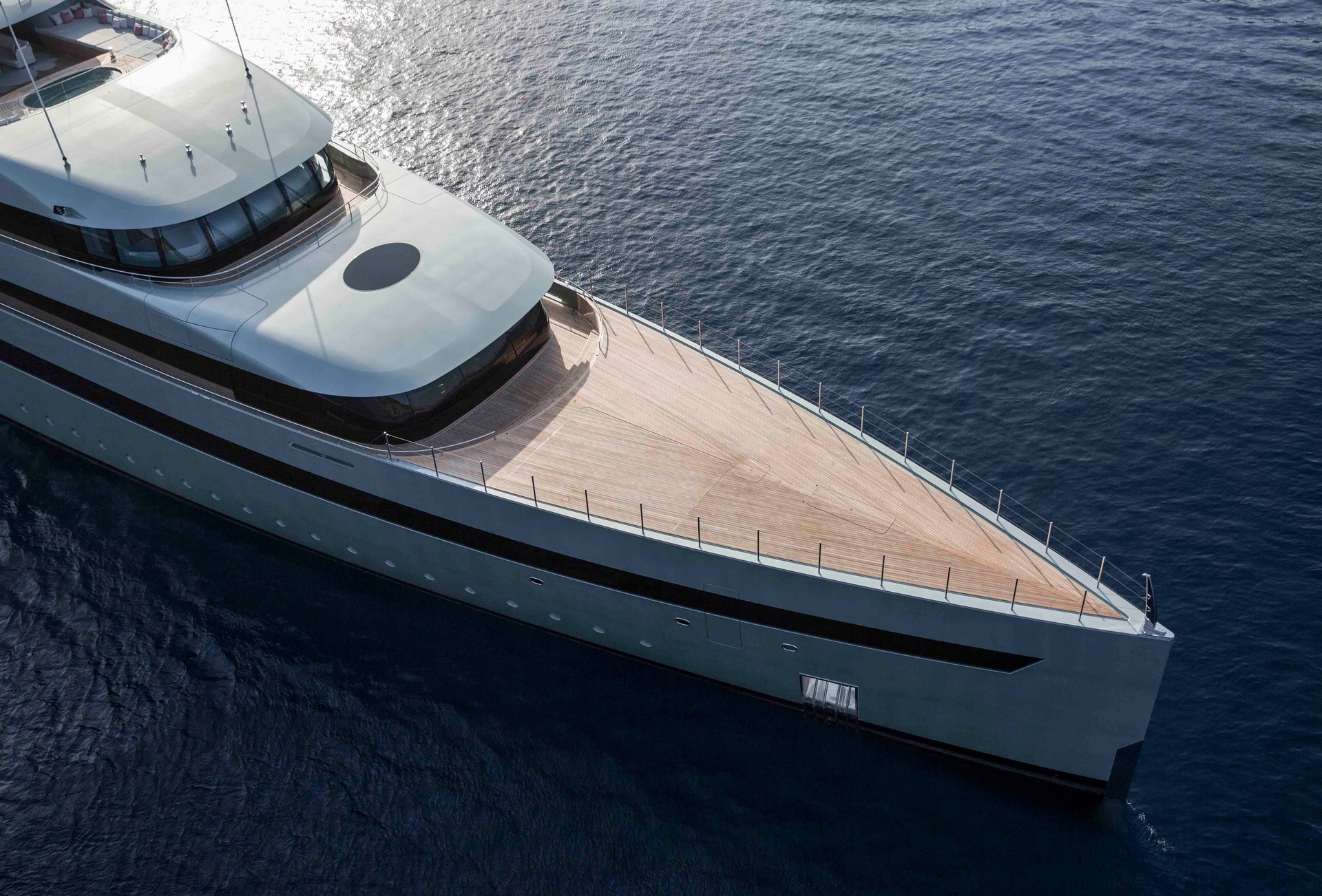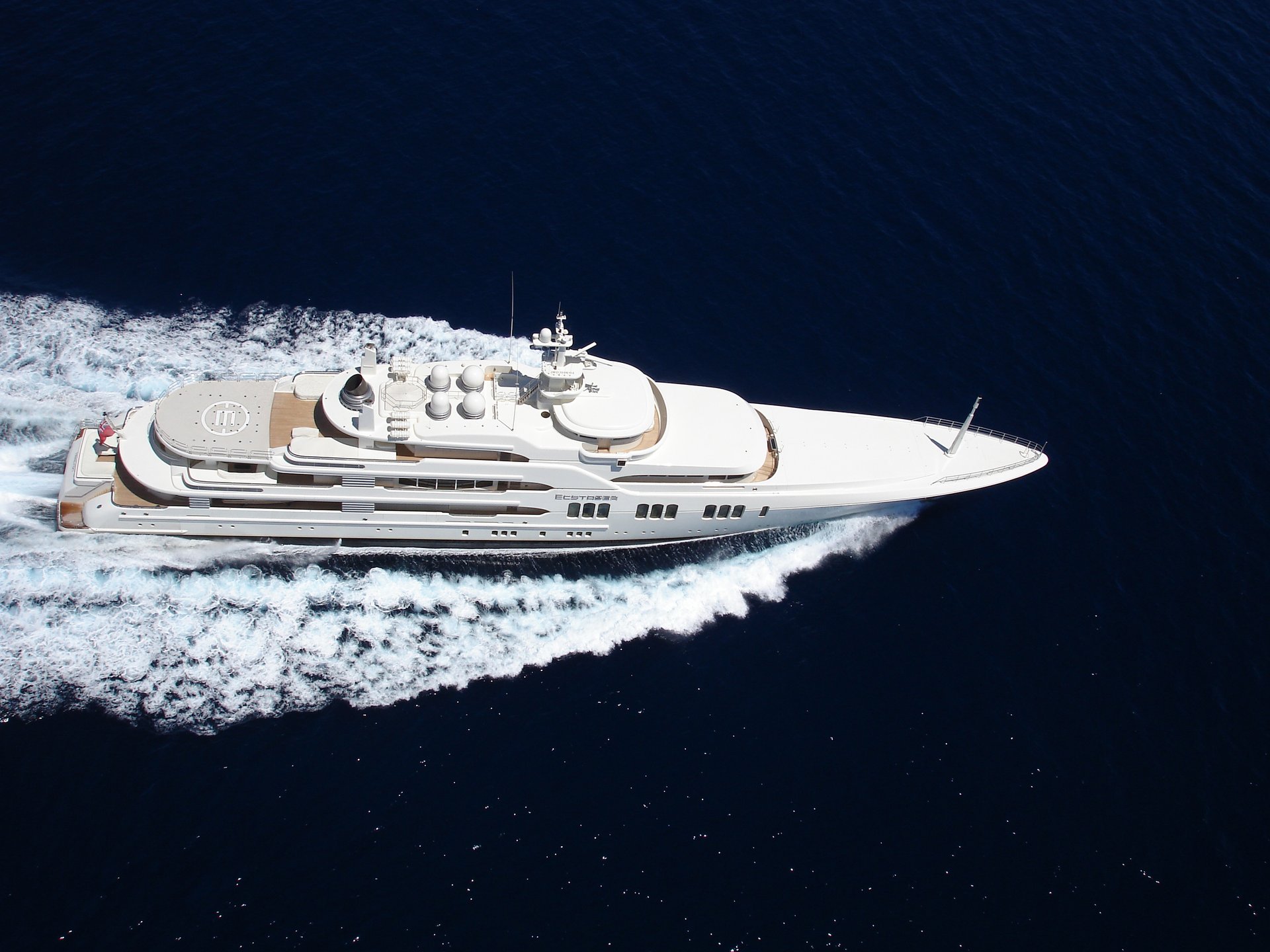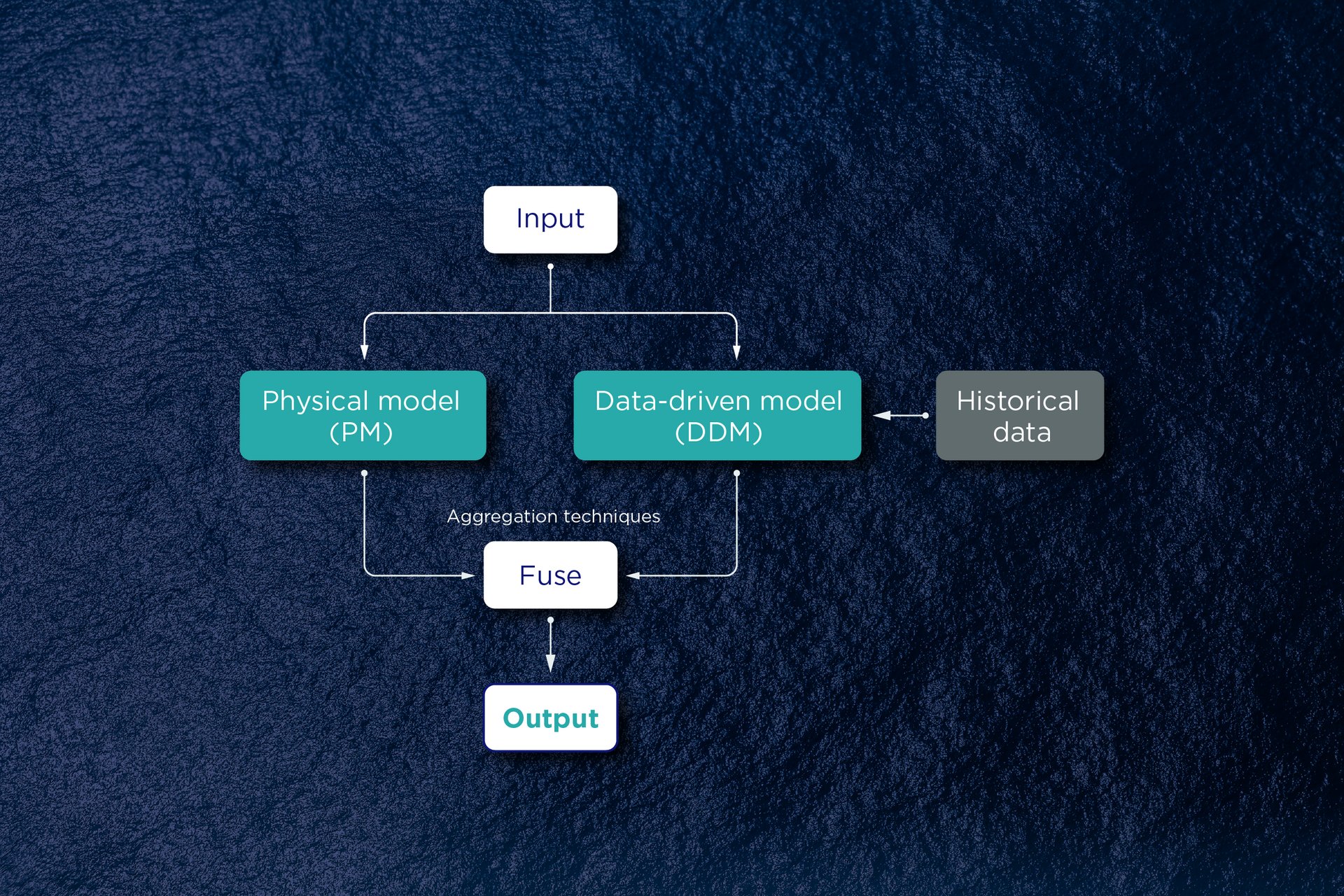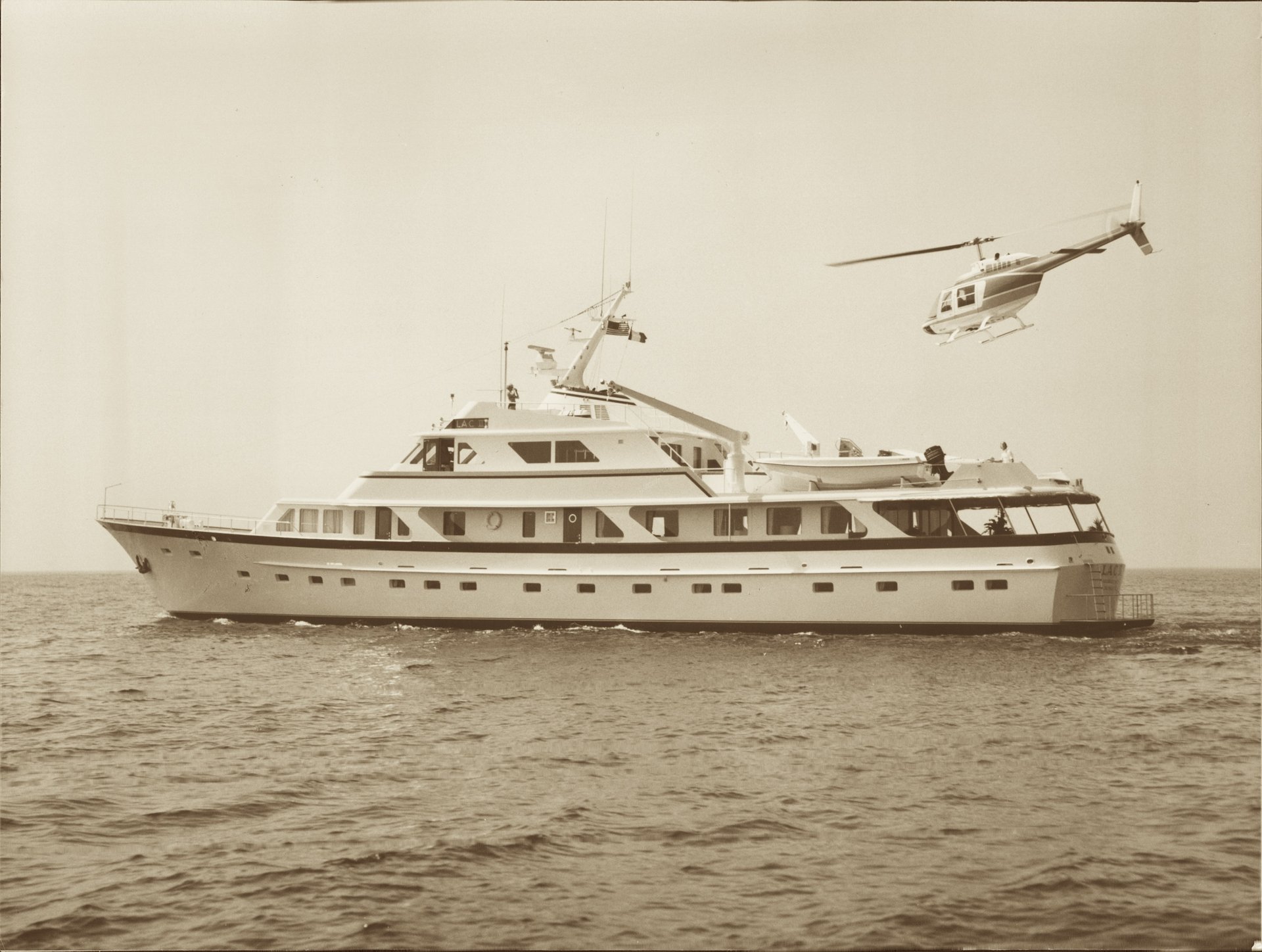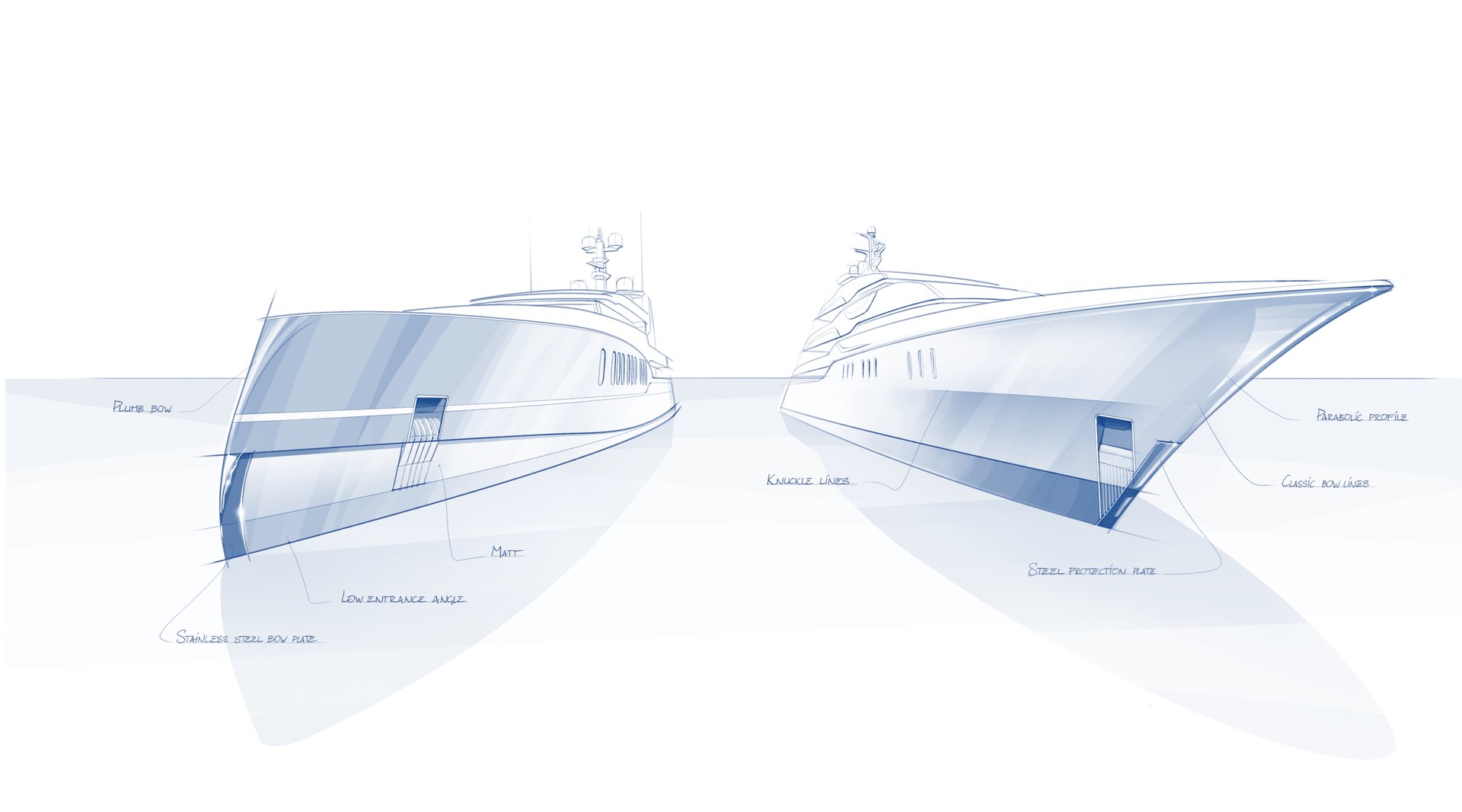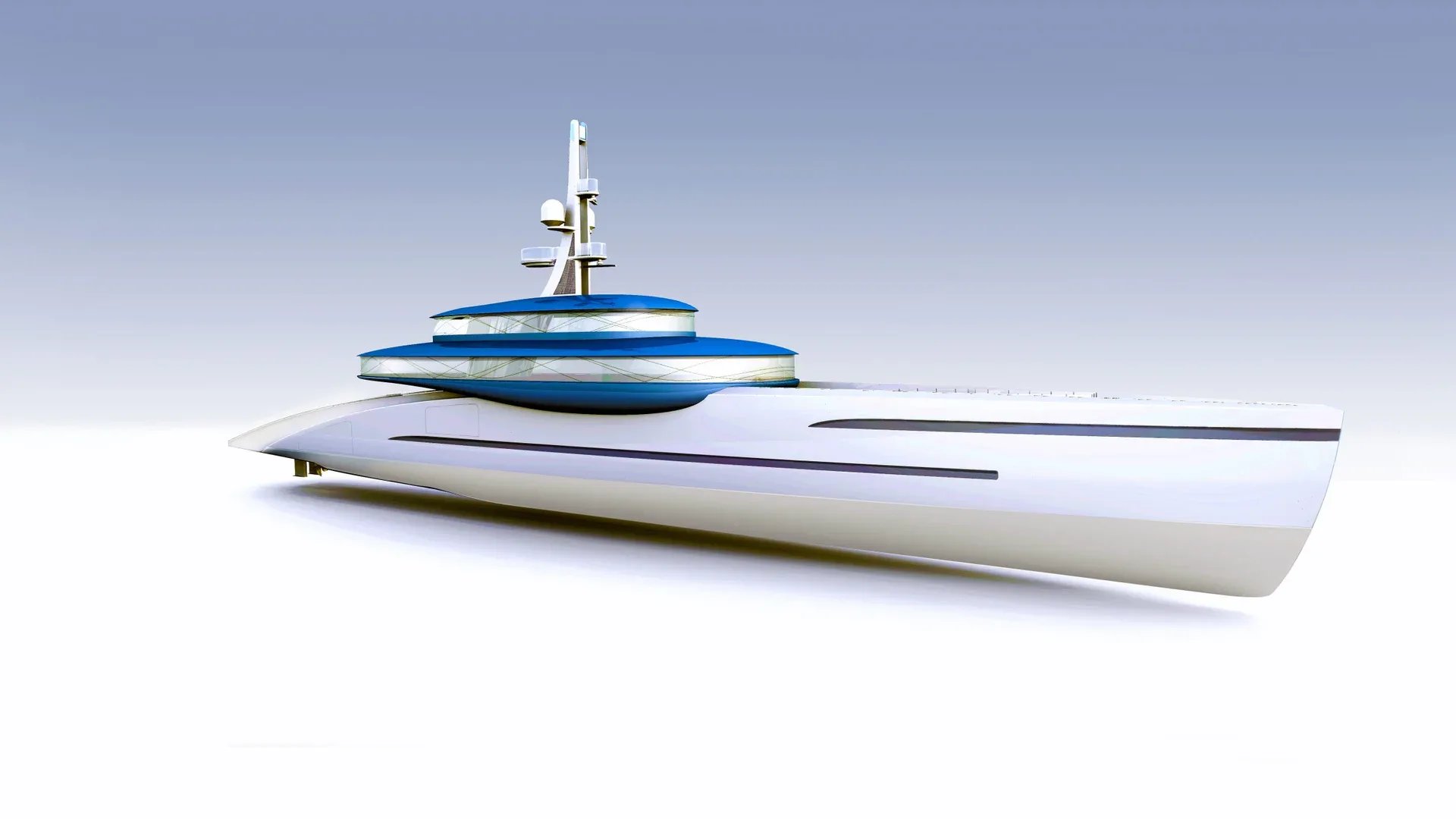The secret of futureproofing within yachting lies within:
Hybrid hydrogen-electric engines, azimuthing propellers, SOLAS-compliant interiors, load-bearing glass, the redeployment of residual heat, fuel cells and energy storage, sensor data and remote systems monitoring, situational awareness and advanced engineering collaborations with leading innovators like NASA and the European Space Agency.
Quiet, please
In 2015 Feadship launched the world’s first luxury motor- superyacht with hybrid power in the form of the multi-award-winner Savannah. Her owner was inspired by the eco-friendly electro-mechanical propulsion platform predicated by the Future Feadship Concept Breathe five years prior. Savannah translated ideas into practice in stunning fashion, with a pioneering mix of a Wärtsilä main engine, three generators, a million Watts of Li-ion batteries, a single central propeller shaft and an azimuting thruster. Combined with a streamlined hull shape, this provided fuel economies of 30% and awesome flexibility in loading the power plant. The batteries also offered extra speed at the top end and facilitated super-quiet cruising at slow speeds, an asset for the environment in eco-sensitive areas that also offers the serene sound of silence for those on board. Over the past six years various Feadships have leveraged on thechoice between diesel, diesel-electric and all-electric drives. These experiences are helping the concept evolve in many ways, including being the innovative foundation for converting to other diesel-electric or even hydrogen-electric systems as part of a holistic approach to design and construction. The azimuthing propellers derived for Breathe have enabled a further optimisation of props in terms of efficiency while supporting excellent manoeuvrability at full speed. Add in a wealth of redundancy options and an exciting future for propulsion beckons.
Glass act
An exponential increase from a design perspective in the use of glass has led to remarkable achievements in deploying giant slabs on a Feadship. The way some superstructures seem to consist entirely of glass required strokes of genius in terms of integration, strength, flexibility and more besides. The glass features of Venus transformed thinking on this issue (especially for an aluminium yacht) and more recent Feadships to feature gloriously generous sections of double-curved glass include Pi, Zen and Viva. Meanwhile, years of R&D into using glass as a load-bearing material in its own right are ready to bear fruit. While glass normally moves within a flexible construction to avoid being impacted by deformation of hull or superstructure, a new era is upon us of glass actually serving as part of the construction. Expect a host of possibilities to be unlocked for exterior designers thanks to the fewer mullions required and spaces being even more open. Feadship research has also extended to the regulatory world so goal-based class approval can be obtained on a case-by-case basis for adventurous owners looking to take the next steps in the art of glass.
Hands on full-custom quality
The first fully custom SOLAS-compliant interior was achieved in amazing fashion on Symphony, which in addition to breaking through the 100-metre mark for Feadship was also the first superyacht to meet all Passenger Yacht Code regulations. While initial discussions with Lloyd’s on how to achieve this feat seemed to rule out the use of wood, Feadship’s exacting testing regime proved that various types and treatments of wood were indeed possible… In theory. The successful application in practice on Symphony was a tribute to the skill and ingenuity of the craftsmen across all disciplines involved in construction who were, for instance, able to switch to using all-new base materials. From plasterwork to lacquer, fabrics to leathers, the 300-plus finishes were individually considered for low flame spread and smoke emissions while being visually stunning. This ultra-intricate triumph is also a testimony to Feadship’s close cooperation with key suppliers and illustrates how not all innovation involves high-end technologies: priceless hands-on experience is equally essential for quality. The same approach is currently being realised on even greater scale on the 118-metre Feadship Project 1010, due to be unveiled in 2022.
Waste not, want not
The greatest waste of energy on a superyacht, by some distance, is the way only one-third of the fuel consumed by diesel engines is used to actually power the yacht. The remainder is lost to the atmosphere in the form of heat. The heat dissipated by the engine and generator is also available and major efforts are being made to recover thermal energy and redeploy it for other purposes on board. Residual heat is being used for pools, air-conditioning systems, sanitary facilities and absorption cooling machines. Although more complex to achieve, the heat from exhaust gases is also being increasingly recycled. And the next front line in waste avoidance is to find ways to smartly convert the heat from cold. This may sound counter-intuitive but the energy consumed to keep things cool is significant. Overall, the energy consumption required for the average hotel load on a Feadship has thus far been reduced by around 20% via the various means of waste heat recovery. This is sufficient for those that use the latest systems to avoid consuming any extra fuel to heat water for bathrooms, jacuzzis and the like. The benefits for the environment will be obvious.
In data we trust
Every modern superyacht is a system of systems. Making use of the ocean of information available is a major undertaking at Feadship where data and science are helping make yachts even smarter and optimise preventative maintenance. From the main engine to the laundry, from the supply fan to the autopilot, practically all equipment has a control & monitoring system reading sensor data. Many also receive information from other on-board systems and remote sources. Accessing this priceless data and making optimal use of the available diagnostics offers huge benefits. Operational profiles are analysed and the results implemented in better designs. Feadship’s service teams use the information to support crew and give a better understanding of the mechanical and technical systemswith which they work. Now written as standard into the specs for all new builds, Feadship’s Polestar remote monitoring system ensures optimal service and troubleshooting. Data is an evolution that is also very much part of a revolution. As the complexity of yachts continues to grow, so does the need for and expediency of automation and machine learning. Unlike traditional data analysis using formulas, an AI grey box approach examines patterns and uses algorithms to give an insight into the variables in different systems that influence each other. Machine learning is deployed to automatically teach engineering tools so that each and every Feadship becomes better. And while data can enable anomalies to be identified, the smart systems under development will allow Feadship to analyse all these isolated data points and respond before problems even occur. And yes, quality of data security is always assured too.
Fuel for thought
The integration of fuel cells on superyachts is gathering pace and opening up new opportunities in terms of on-board power, alternative fuels and zero impact on local operation. Fuel cells convert the reaction between hydrogen and oxygen to cleanly and efficiently generate an electrical current. The process of producing electricity involves a silent reaction rather than the combustion process of a generator with fuel and moving parts that also generate sound and vibrations. The challenge is that superyachts don’t have an abundance of space to run on pure hydrogen, which tales up a lot of volume. While the current mature technology involves using fuel cells to run on pure hydrogen in a partial range, the next generation are set to be inherently flexible, allowing for operation on other types of fuel, or better said hydrogen carriers like methanol. As developments continue apace it is crucial to ensure that all Feadships built today are ready for whatever fuel will be used in five years’ time. Internal combustion engines have to be flexible as do the fuel tanks placed on board so that they can carry different types of fuel later.
Planning ahead with foresight
Situational awareness, motion prediction and routing are at the heart of a programme developed by Feadship called Foresight. This provides advice to captains on a wide of scenarios such as ensuring maximum comfort and finding the most fuel-efficient way to travel between given locations. It includes an information tool on the bridge, ship-motion predictions based on a design-specific model, and a wave-radar software unit that processes unfiltered X-band radar data to derive wave/swell information and help determine the most comfortable heading. Foresight is connected to an online server which generates bespoke high-resolution forecasts of wind, sea and swell, including in relatively sheltered areas. The system evaluates the impact on comfort of a varietyof on-board factors, along with relative water motions around the yacht, tender operations, water motions in the pool and helicopter operations.
Power to the people
The process of creating a pure custom yacht requires a great deal of work to be dovery quickly by a large number of very bright people. There is only a relatively short period of time available between the moment an owner with a mind full of smart ideas first sits down with the Feadship designers and the keel laying of the bespoke yacht in question. To facilitate the course, considerable work is going into leveraging on the priceless value of past experience, optimising the quality of people, processes, tools and systems, integrating engineering capacities and tapping into the wealth of knowhow available among builders, craftsmen and naval architects. A good example of an innovative process in practice is the way Feadship works in accordance with concurrent design, a methodology developed together with the European Space Agency. This advanced design and engineering process brings together the main disciplines at least once a week during the various project stages. Important options, considerations and decisions are discussed and developed in one space with the client and various experts as part of an efficient method that leads to creativesolutions. Dedicated concurrent design facilities include a fully integrated meeting room and an array of tools online, allowing parallel actions to be taken and joint decisions made on the particulars of a design feature. This centrally coordinated systematic approach is a huge improvement on traditional sequential engineering processes.
Big on batteries
Over half of all Feadships launched since 2015 have some kind of hybrid propulsion set up, saving on emissions and running hours, as well as fuel, when sailing. Batteries are increasingly being introduced, with modern battery banks sufficient for shorter cruises. The technology is coming into reach to store enough energy for nights at anchor, day cruises and whole trips in eco-sensitive areas like the Galapagos Islands or Scandinavian fjords. Another use of batteries is peak shaving: shifting demand to periods with a lower demand to spare generators from frequent starting & stopping and low loads, reducing emissions and making it possible to install smaller generators. Large batteries can be charged enroute, including by alternative sources such as solar panels as well as via (green) shore power. They are essentially becoming another kind of energy storage system and increasing the range of operations on battery power only. Mirroring the car sector, plug-in hybrids are set to grow in popularity. With most yachts only tending to sail short distances in general, a battery that can store the equivalent of 2.5% of the entire energy range will allow some 70% of all trips to be sailed on battery power alone.
